

GRV - Tool for Viewing Git Repositories in Linux Terminal - GeeksforGeeks
source link: https://www.geeksforgeeks.org/grv-tool-for-viewing-git-repositories-in-linux-terminal/
Go to the source link to view the article. You can view the picture content, updated content and better typesetting reading experience. If the link is broken, please click the button below to view the snapshot at that time.

Git Repository Viewer or GRV is a cross-platform, free, and open-source GIT GUI client. It provides a terminal-based interface to search and view refs, commits, branches, tags, and diffs in a git repository. The behavior and style can be customized through a configuration file. GRV is written in the Go programming language and is available under GNU v3 public license.
Features of GRV tool:
- Vim-like key bindings
- Custom themes
- Detailed commit graph
- A query language to filter commits and refs.
- Support for cursor
- Data is organized as tabs and splits.
Installing GRV tool on Linux System
Step 1: The latest version of GRV is available in the form of a Linux binary file on https://github.com/rgburke/grv/releases. Click on the Linux binary file to download or you can also use wget.
$ wget -O grv https://github.com/rgburke/grv/releases/download/v0.3.2/grv_v0.3.2_linux64


Note: Replace v0.3.2 with the latest version available.
Step 2: Usechmod commandto give executable privileges to the grv file.
$ sudo u+x ./grv

Step 3: Now run the following command to add an alias for grv executable to your .bashrc/.zshrc conf file.
$ echo "alias grv='~/grv'" >> ~/.bashrc

Step 4: Save the changes to .bashrc/.zshrc by running
$ source ~/.bashrc

Step 5: Finally, use grv command to view refs, commits, branches, and diffs of the required git repository.
$ grv -repoFilePath /path/to/repo
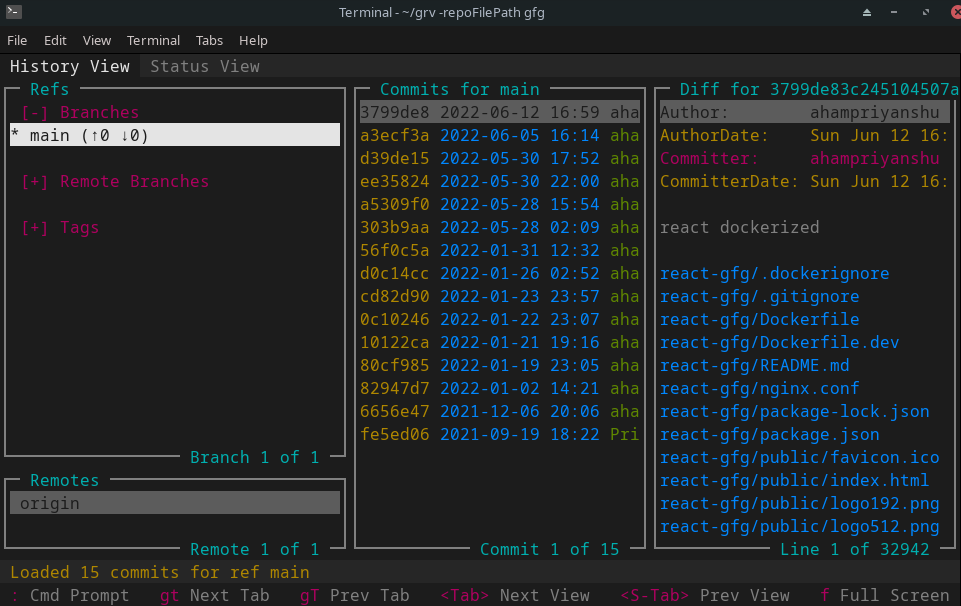
Usage of GRV tool on Linux
Use gt and gT commands to navigate between views.
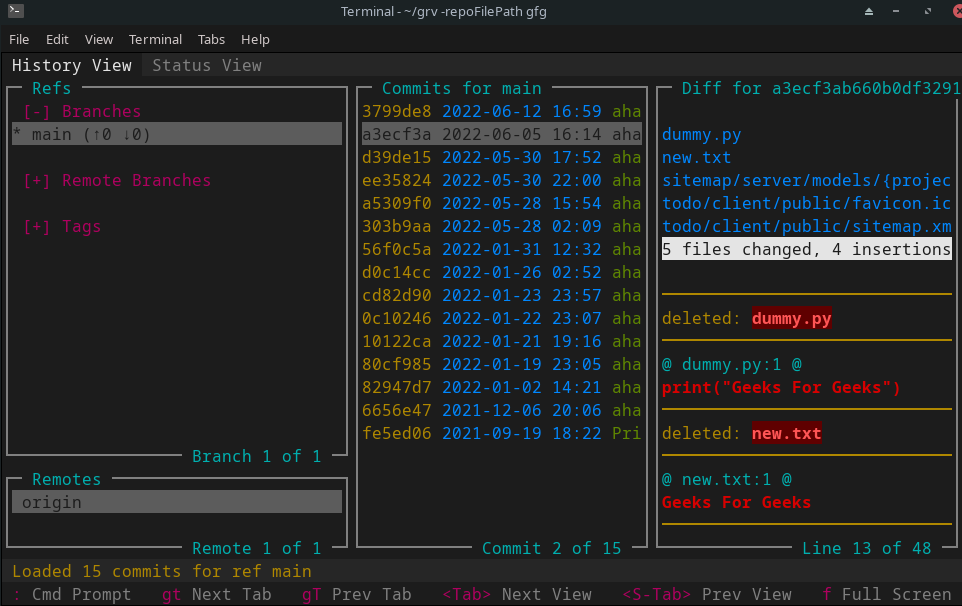
In the below screenshot, the Status section is been displayed, which describes the current status of the repository.
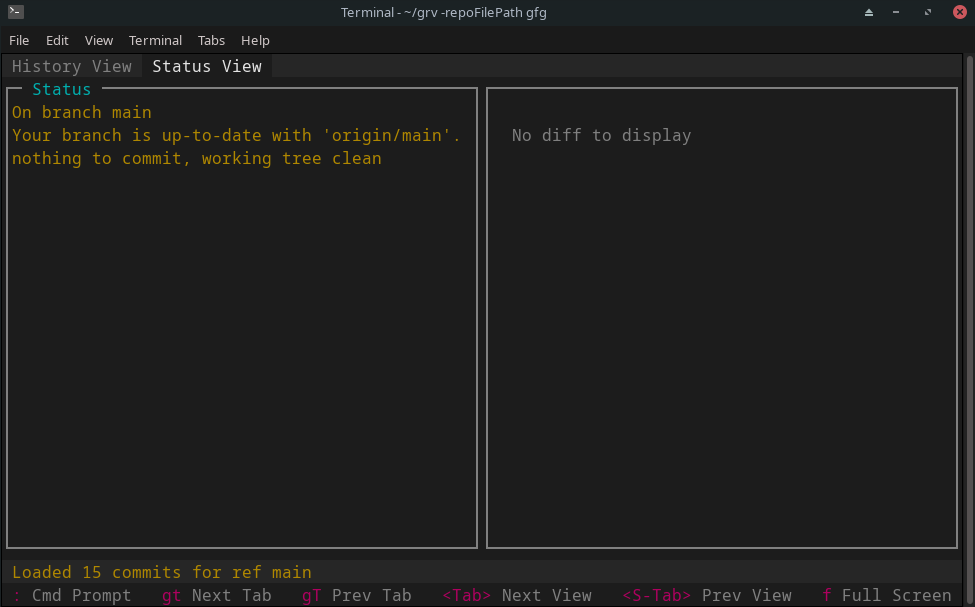
Use <tab> to navigate between different tabs.
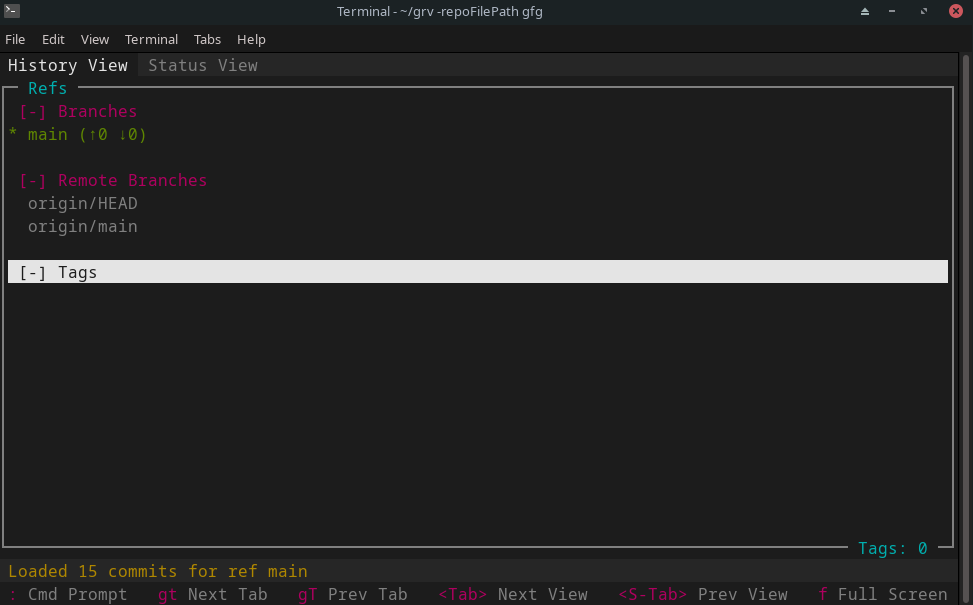
“Origin” is a shorthand name for the remote repository that a project was originally cloned from.
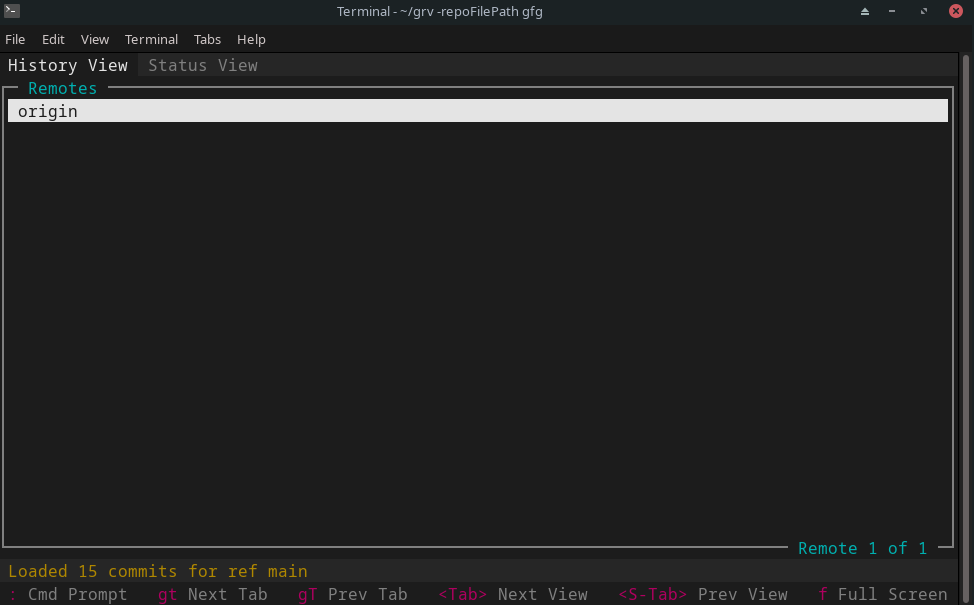
The below screenshot describes the member’s information and their activities on the repository.
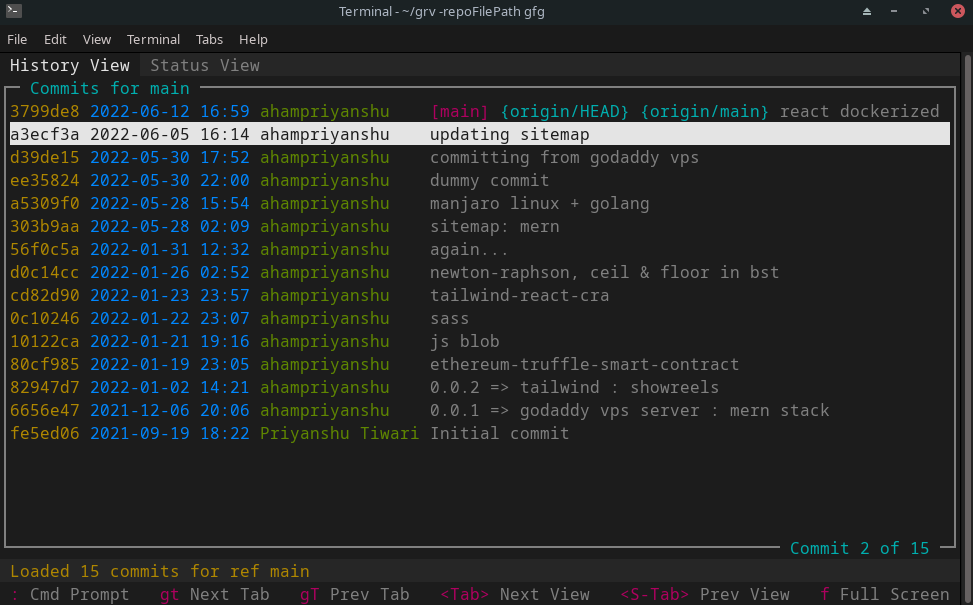
Specific member information is been displayed in the below screenshot.
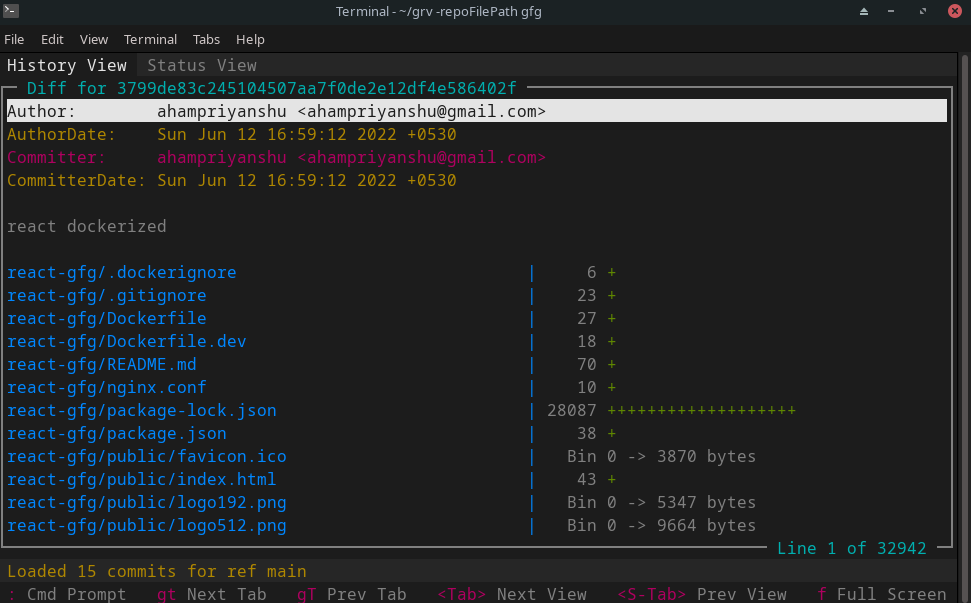
Some extra information about the repository is been displayed in the below tab.
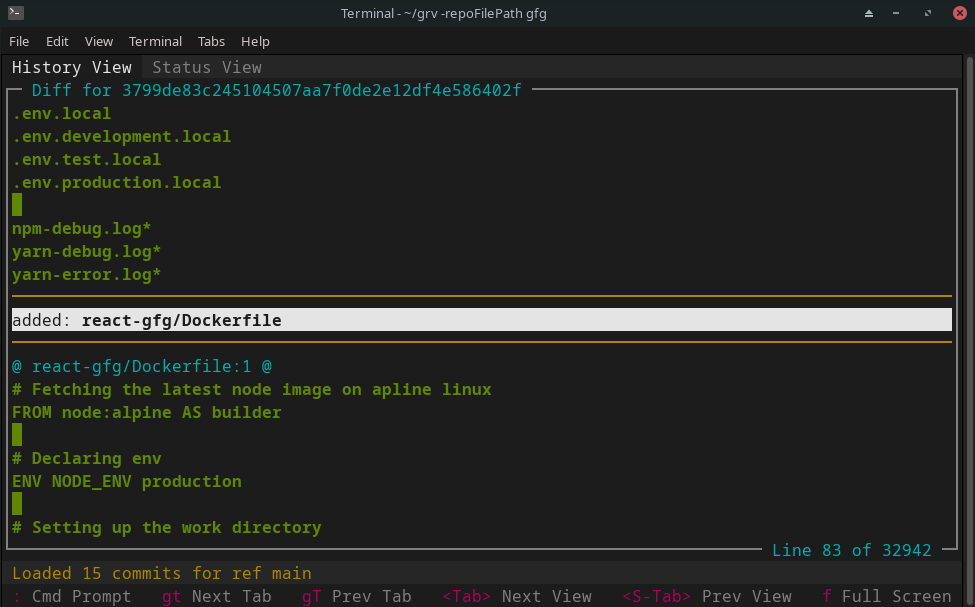
We can use :q to quit from the tool or the editor.

Recommend
About Joyk
Aggregate valuable and interesting links.
Joyk means Joy of geeK